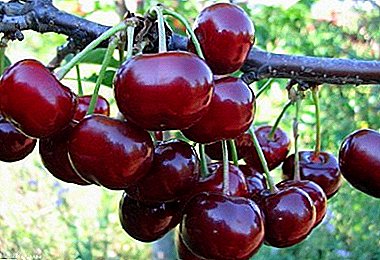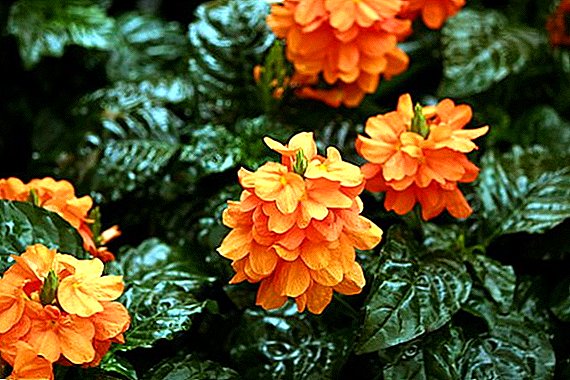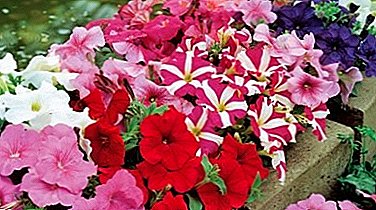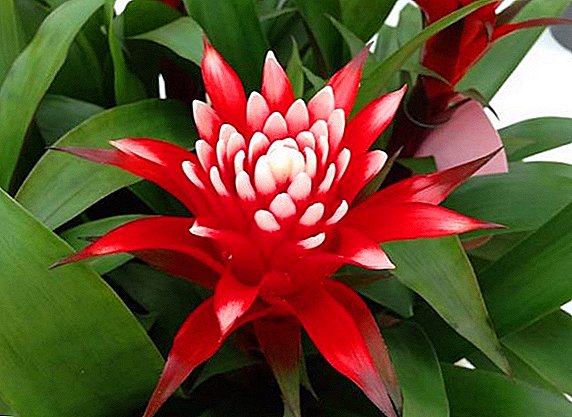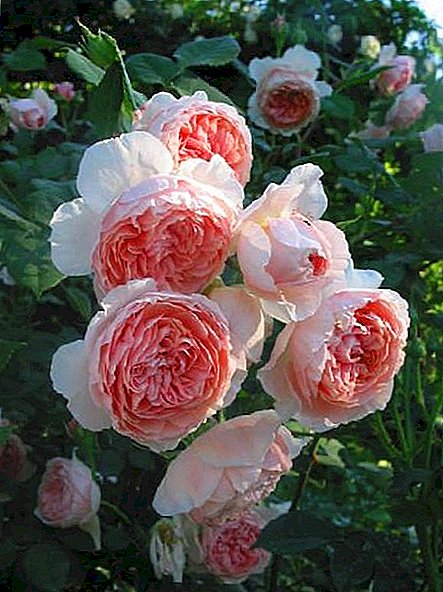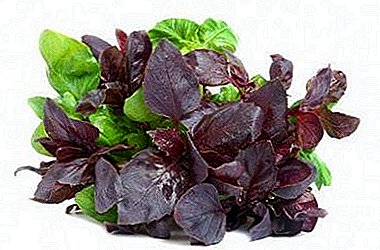
Basil (or royal herb) is a spicy plant that is widely used in cooking and traditional medicine.
It is believed that the basilica is home to India. The spice came to Europe thanks to the campaigns of Alexander the Great.
Since ancient times, this plant was endowed with magical properties and used as a cure for many diseases. Today we will understand, than basil leaves are useful for women's health.
What is useful for the female body?
The benefits of basil for the female body:
- The leaves of the royal herb are rich in vitamin A. This vitamin, being a strong antioxidant, protects a woman's body from developing cancer of the uterus, ovaries and mammary glands.
- Enzymes that are part of the spice, promote active fat burning, accelerate metabolic processes and weight loss.
- Basil also contains the organic matter methylcavicol, which is actively involved in tissue regeneration and delays the aging of cells and the body as a whole. This substance is actively working in the composition of face masks with essential oil of basil: it smoothes the skin, removes fine wrinkles, prevents the appearance of new ones.
- Essential oils of this spice are used to moisturize and restore dry brittle hair.
- Spicy leaves actively fight inflammations of internal organs. Especially successfully they cope with the suppression of the inflammatory process in the ovaries, which according to statistics affects 85% of women.
 Vitamin K, contained in spices, is actively involved in the process of calcium absorption by bones. This is extremely important for women over 45 years of age, when due to hormonal changes, bones become more fragile and worse absorb minerals.
Vitamin K, contained in spices, is actively involved in the process of calcium absorption by bones. This is extremely important for women over 45 years of age, when due to hormonal changes, bones become more fragile and worse absorb minerals.- Natural substances with antispasmodic properties, help relieve menstrual pain, as well as struggling with migraines. It is believed that this spicy herb is able to establish a female cycle.
- Regular use of spices eliminates insomnia and helps regulate the cycle of sleep and wakefulness.
- The leaves have diuretic properties, prevent the formation of kidney stones.
- Spice relieves spasms and soothes the nervous system under stress.
- Eliminates intestinal and stomach pain, eliminates bloating and regulates digestion.
- Basil enhances immunity and actively inhibits the reproduction of virus cells in the body.
- Strengthens the heart and blood vessels, reduces cholesterol in the blood.
- Promotes healing of wounds, cuts, stitches after surgery.
- Fights oral bacteria, strengthens gums.
- It has antipyretic properties and acts as a remedy for colds.
The chemical composition of spicy grass:
- 100 g of fresh basil contains:
- 27 kcal;
- 2.5 g of proteins;
- 0.6 fat;
- 4.3 carbohydrates.
- Vitamins:
- beta carotene - 3.14 mg;
- nicotinic acid - 0.9 mg;
- ascorbic acid - 18 mg;
- vitamin K - 414 mg;
- Vitamin B6- - 0.155 mg;
- Vitamin B1 -0.034 mg.
- Minerals:
- potassium - 290 mg;
- calcium - 177 mg;
- manganese - 1.15 mg;
- copper - 385 mg;
- iron - 18 mg.
 Indications for eating spicy leaves:
Indications for eating spicy leaves:
- catarrhal and inflammatory diseases;
- bleeding gums, periodontal disease, bad breath;
- abdominal pain, flatulence;
- swelling, bladder disease;
- insomnia, nervous conditions;
- sexual dysfunction in men;
- skin diseases, wounds, cuts, stitches;
- avitaminosis, weak immunity;
- high blood pressure;
- atherosclerosis.
Benefits when breastfeeding
Can you eat basil nursing mom? Spicy leaves are very helpful when breastfeeding. (GW):
- basil helps to increase the volume of breast milk;
- spice essential oils improve the taste of milk and increase the appetite of the child;
- useful substances from greens penetrate the composition of milk and improve the immunity of the infant, and also contribute to the rapid sleep and deeper sleep of the child.
A nursing mother can eat basil in any form, but only after consulting a pediatrician.
Is there a difference from taking purple and green vegetables?
It is believed that there is practically no difference in the beneficial properties between green and purple basil. The only difference is in taste. Purple basil has a more intense and sharp aroma and taste, and green - softer and more tender.
Can it harm health and what are the contraindications?
Basil, like any medicinal plant, can harm with uncontrolled use. Eating this spice can be dangerous in the following diseases:
 epilepsy;
epilepsy;- type 1 and type 2 diabetes;
- coronary heart disease;
- gastritis, peptic ulcer and duodenal ulcer;
- poor blood clotting, blood clots.
Basil intake is contraindicated for pregnant women at any time.. Spicy leaves contain mercury, so its use in large quantities can lead to irritation of the gastrointestinal tract, poisoning, allergies and cramps.
How to apply?
To get all the benefits and to prevent poisoning, fresh spice is eaten in the amount of 10-15 leaves per day. You can also drink 2-3 cups of tea (decoction) of dried basil daily. In the absence of contraindications, basil in any form can be consumed daily.
What can you cook?
Consider two simple recipes using basil.
Soup
For vegetable soup is necessary:
- 1 potato;
- 1 medium onion;
- 400 g broccoli;
- a large bunch of fresh basil;
- 2 cloves of garlic;
- 2 tbsp. spoons of olive oil;
- 1 liter of water or vegetable broth.
Cooking:
- wash vegetables, chop large onions and potatoes;
- at the bottom of the pan, heat the olive oil and fry the vegetables for about 10 minutes;
- Broccoli divided into inflorescences and sent to the pan along with vegetable broth (or water) and garlic;
- bring to a boil and leave on the fire for 10 minutes;
- chop up basil and send to the pan;
- chop the soup to a state of liquid puree with a blender.
The dish is served in the form of heat. This soup is especially good to use with spasms during critical days: basil in the composition of warm soup-puree relieves muscle spasm and pain without the use of tablets.

Salad
Ingredients:
- cucumber;
- a tomato;
- Bulgarian pepper;
- Mozzarella;
- a bunch of basil;
- olives;
- olive oil;
- lemon.
Cooking:
- wash greens and vegetables thoroughly;
- chop vegetables in any way;
- cut cheese into small cubes;
- chop the basil leaves without a knife (tear);
- mix everything, add olives;
- Salad salad, add olive oil to taste and sprinkle with lemon juice for piquancy.
For weight loss and saturation of the body with vitamins, this dish can be used for dinner 3-4 times a week.

What other medicinal leafy vegetables are there?
Besides basil, women's health benefits:
- spinach - rich in iron, potassium, proteins;
- cabbage - prevents aging, saturates the body with vitamin C;
- iceberg lettuce - contains omega-3 acids, valuable to health and beauty;
- arugula - contains a loading dose of minerals, contributes to the preservation of youth.
Basil is an important nutrient that contains a source of beauty and health for the female body. However, the leaves of a spicy plant is not a panacea, they can not be used uncontrollably. In the absence of contraindications, you can eat no more than 15 basil leaves per day.


 Vitamin K, contained in spices, is actively involved in the process of calcium absorption by bones. This is extremely important for women over 45 years of age, when due to hormonal changes, bones become more fragile and worse absorb minerals.
Vitamin K, contained in spices, is actively involved in the process of calcium absorption by bones. This is extremely important for women over 45 years of age, when due to hormonal changes, bones become more fragile and worse absorb minerals. epilepsy;
epilepsy;